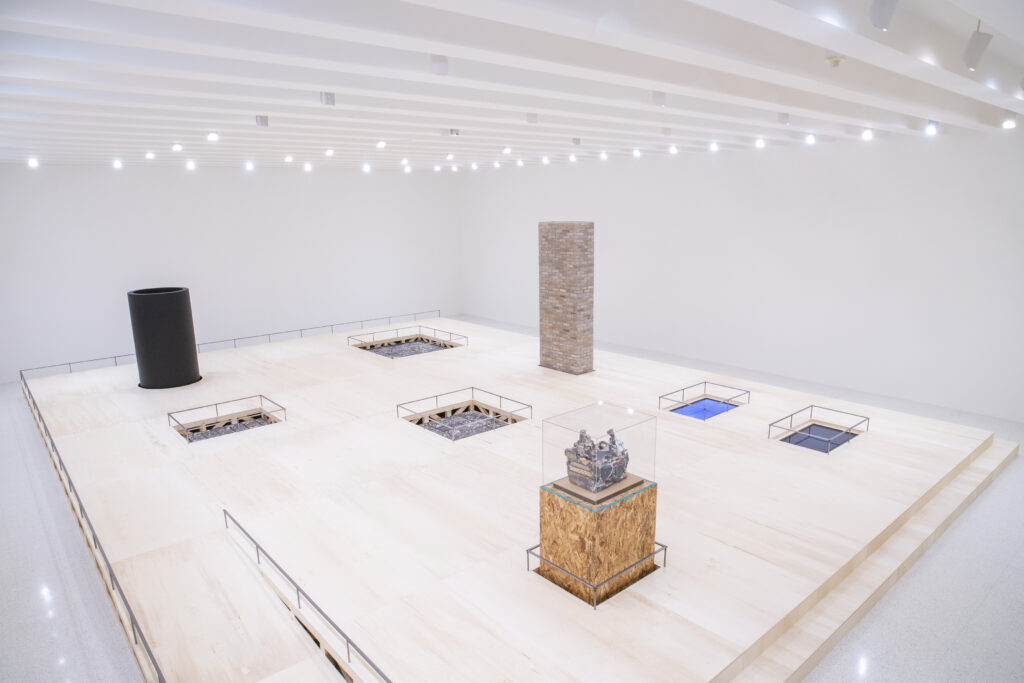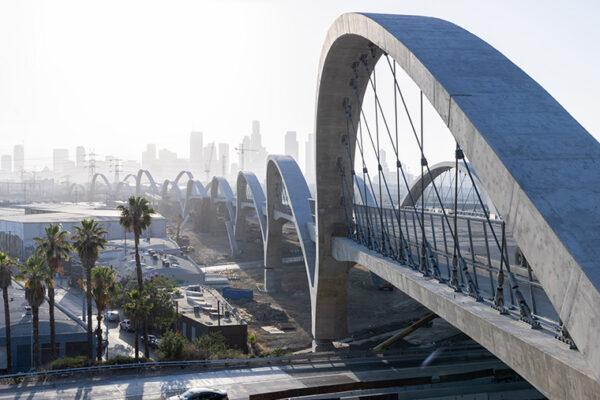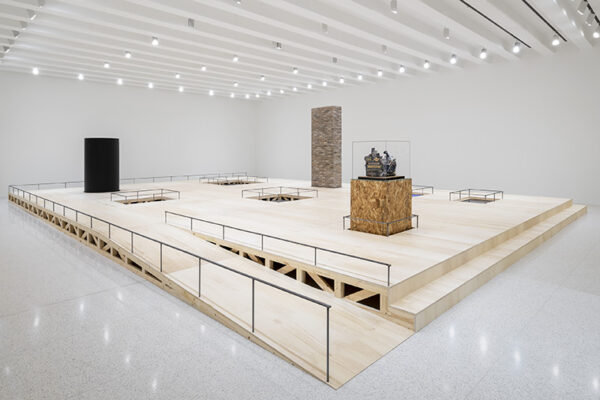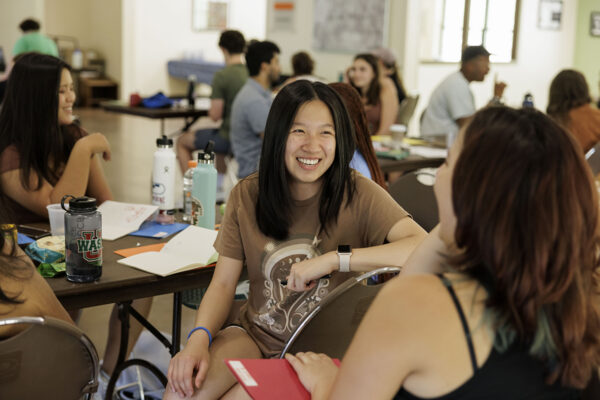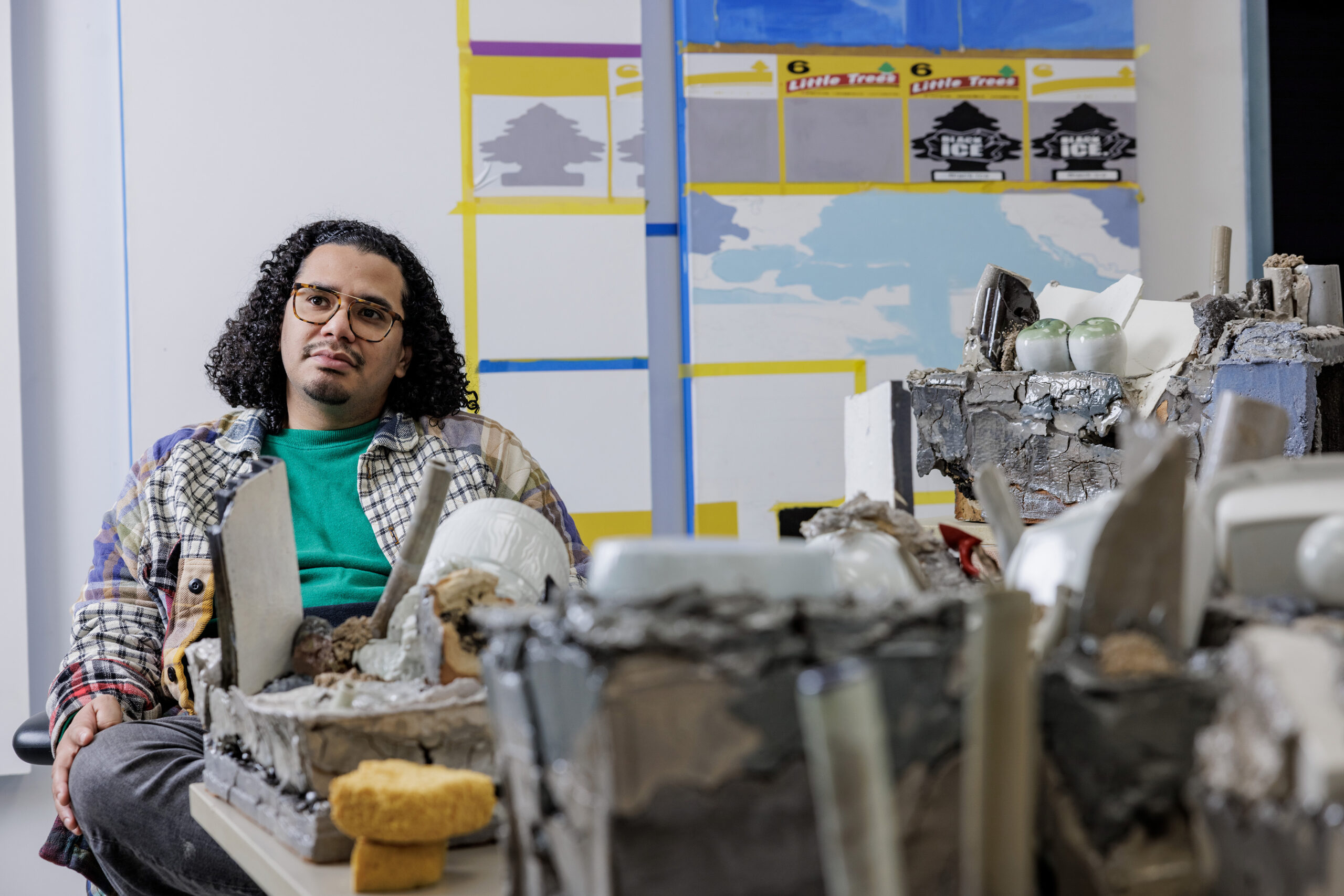
“I’m interested in the politics of material,” said Kahlil Robert Irving. “The political architecture of ceramics relates to the evolution of industrial manufacturing. It’s a kind of consumption — extracting material for the purpose of building a society that disregards the natural environment.”
Irving, among the most celebrated sculptors of his generation, was discussing “Archaeology of the Present,” a 2,000-square-foot installation that will open Feb. 23 at the Mildred Lane Kemper Art Museum at Washington University in St. Louis. Originally commissioned by the Walker Art Center in Minneapolis, the piece explores our relationship to the city street through a complex layering of sculpture, handmade tile, found objects, painting and video.
“I’m interested in trompe-l’œil, in ceramics looking like things from life,” Irving continued. Yet Irving also explores the wider possibilities of the ceramic medium. “I’m interested in it looking like itself — looking like gravel, looking like concrete, or cement, or a block of clay, or functional pottery.
“I want it to do all of those things at the same time.”
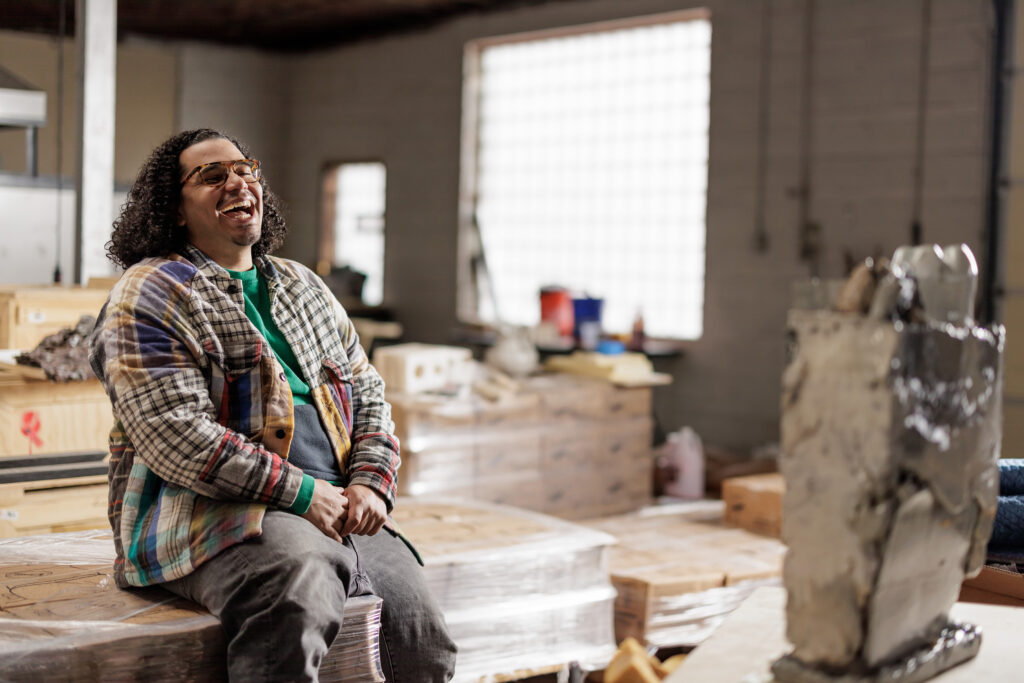
Making a thing
Born in San Diego, Irving was raised by his grandmother in St. Louis’ Compton Heights neighborhood. He vividly remembers the 1999 implosion of the St. Louis Arena, as well as the mass demolitions, in the early 2000s, that reshaped nearby McRee Town.
Irving was introduced to ceramics at the now-closed Potter’s Workshop on Manchester Avenue. “There’s a certain reveal that occurs,” Irving said. Clay, wet and malleable, is transformed into something that lasts “a different kind of time.”
“I don’t think I really understood that permanence,” he added. “I just knew that I made a thing.”
Irving earned a bachelor’s degree in art history and ceramics, with minors in Asian studies and social practice, from the Kansas City Art Institute in 2015. He then returned to St. Louis as a graduate chancellor’s fellow in WashU’s Sam Fox School of Design & Visual Arts, graduating with his master’s in fine arts in 2017. In the years since, he has shown at New York’s Whitney Museum of American Art (2019), the Singapore Biennale (2019), the Contemporary Art Museum St. Louis (2020) and New York’s Museum of Modern Art (2022), among many others.
Additional honors include a Louis Comfort Tiffany Foundation Biennial Award (2019) and a Joan Mitchell Foundation Grant (2020). Last December, he won the inaugural Young Artists Prize from Cultured magazine. Notably, “Archaeology of the Present” will coincide with a new exhibition at the Nerman Museum of Contemporary Art in Overland Park, Kan. — thus bookending the state of Missouri.
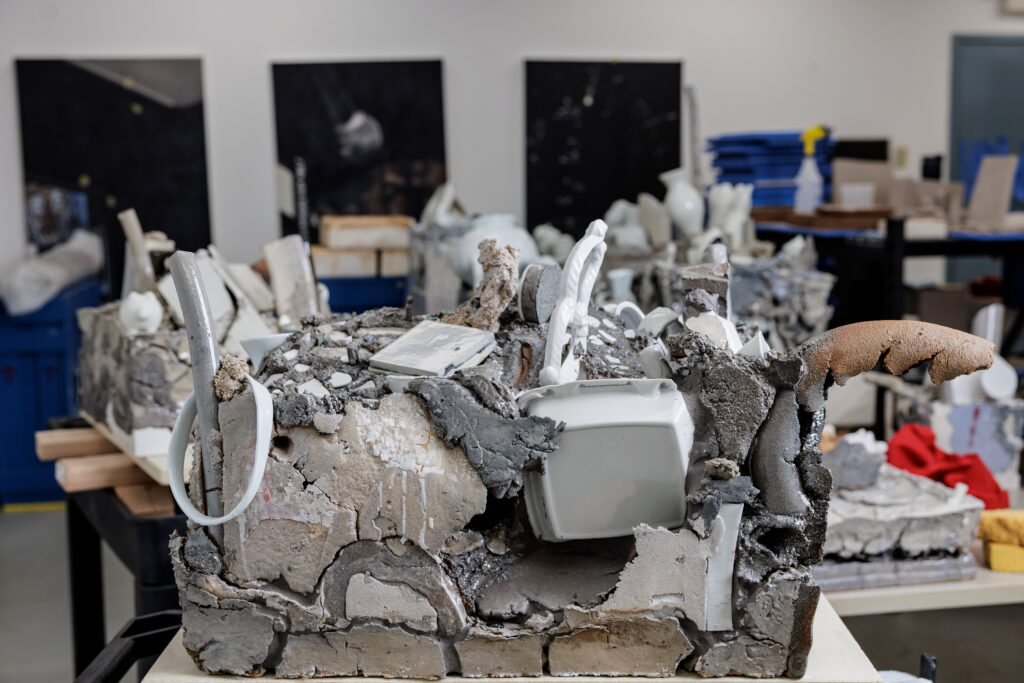
Capabilities and connections
While rooted in clay, Irving’s practice encompasses a wide range of tools, techniques and media. “I make sculpture,” he said. “I’m an artist. I am not bound by specific material issues. I’m interested in material capabilities.”
Irving also draws on the legacy of figures like David Drake, a potter enslaved in South Carolina, who inscribed his works with poems (despite state laws against Black literacy); and Thomas Commeraw, who was born enslaved but established a successful ceramics business in early 19th-century New York.
Irving further aligns his work with the often-neglected history of industrial ceramics: the vessels produced for storage; the coping tiles that protect brick structures from ice and rain; the salt-fired pipes of 17th-, 18th- and 19th-century sewer systems.
“Thousands of enslaved people were used for their labor to produce things for the grandeur, safety, security and investment of white people in this country,” Irving said. “The U.S. studio pottery narrative does not include any of those people.
“I’m trying to build a connection.”
Echoes and excavations
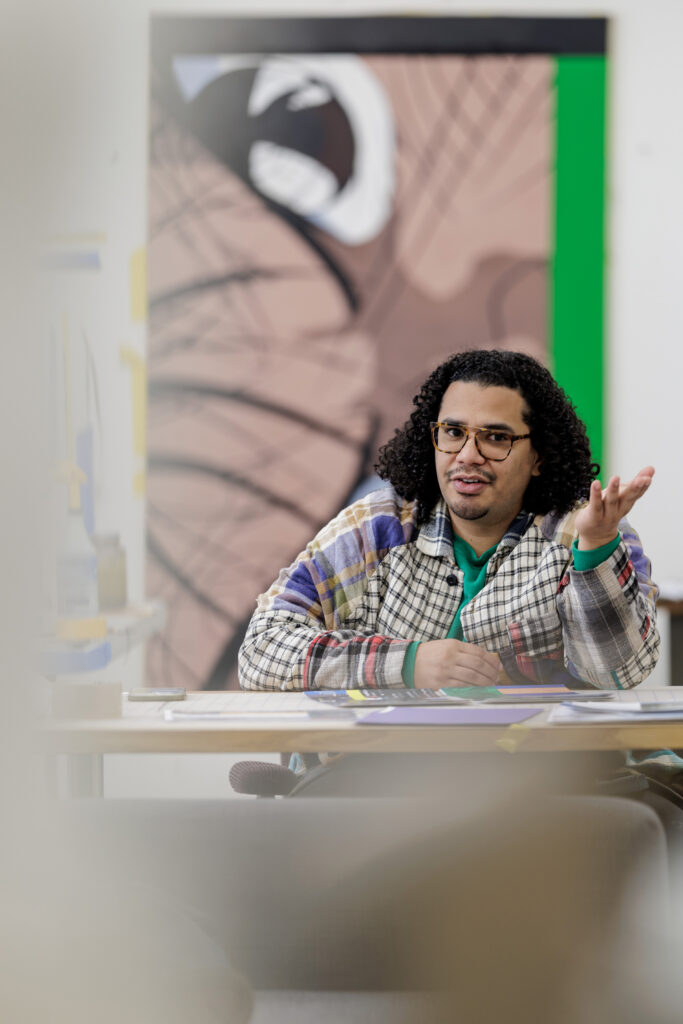
“Archaeology of the Present” was partly inspired by a 2014 visit to the Church of the Nativity in Bethlehem. Irving recalled thick scaffolding as ancient mosaics were excavated from interior walls and floor. “That really excited me,” he said. “I’ve been holding on to that memory for several years.”
Now filling the Kemper Art Museum’s Ebsworth Gallery, “Archaeology of the Present” is set within a large plywood platform that can be approached via a single wide step or an Americans with Disabilities Act-compliant ramp. A massive, two-ton industrial pipe and a thick column of brick-like tile rise toward the gallery ceiling. Sitting atop a chipboard vitrine is an intricate ceramic sculpture, seemingly composed of urban refuse — a fractured cinder block, short lengths of broken aluminum pipe and concrete — but entirely fabricated by Irving. Nothing found was used to make this sculpture.
Like much of Irving’s work, the piece speaks both to the struggles of the post-industrial city and to the story of ceramics itself.
“In the United States, historically, we have earthenware, stoneware factories,” Irving observed. “We don’t have white high-fire ceramic factories.” Instead, such works were largely imported from European factories, which in turn co-opted Asian practices. “So what does that mean for the history of decorative ceramics brought to this land — similar to my ancestors — as objects?”
Sunken below the platform are groups of dark, hand-pressed stoneware tiles. Some are glossy black; others are speckled with white ceramic, their mottled surfaces recalling, as Irving put it, “the night sky and the asphalt road.”
“The work is about echoes,” Irving added. For example, the central platform rests on a series of wooden trusses that suggest 19th- and 20th-century railroad bridges. A horizontal stone piece — one of several new elements created for the Kemper Art Museum — translates a digital collage into a CNC-milled bas-relief sculpture that visitors are invited to touch. Two videos, also embedded within the platform, collapse our expectations of sky and ground.
“There are parts of the work that I’m still learning from,” Irving said. “Each installation grows from the last one. I’m just trying to understand why things are the way that they are, and to make art that satisfies more than one thing at the same time.
“The timbers of hope can get rotten, if not reinforced with structural change.”
